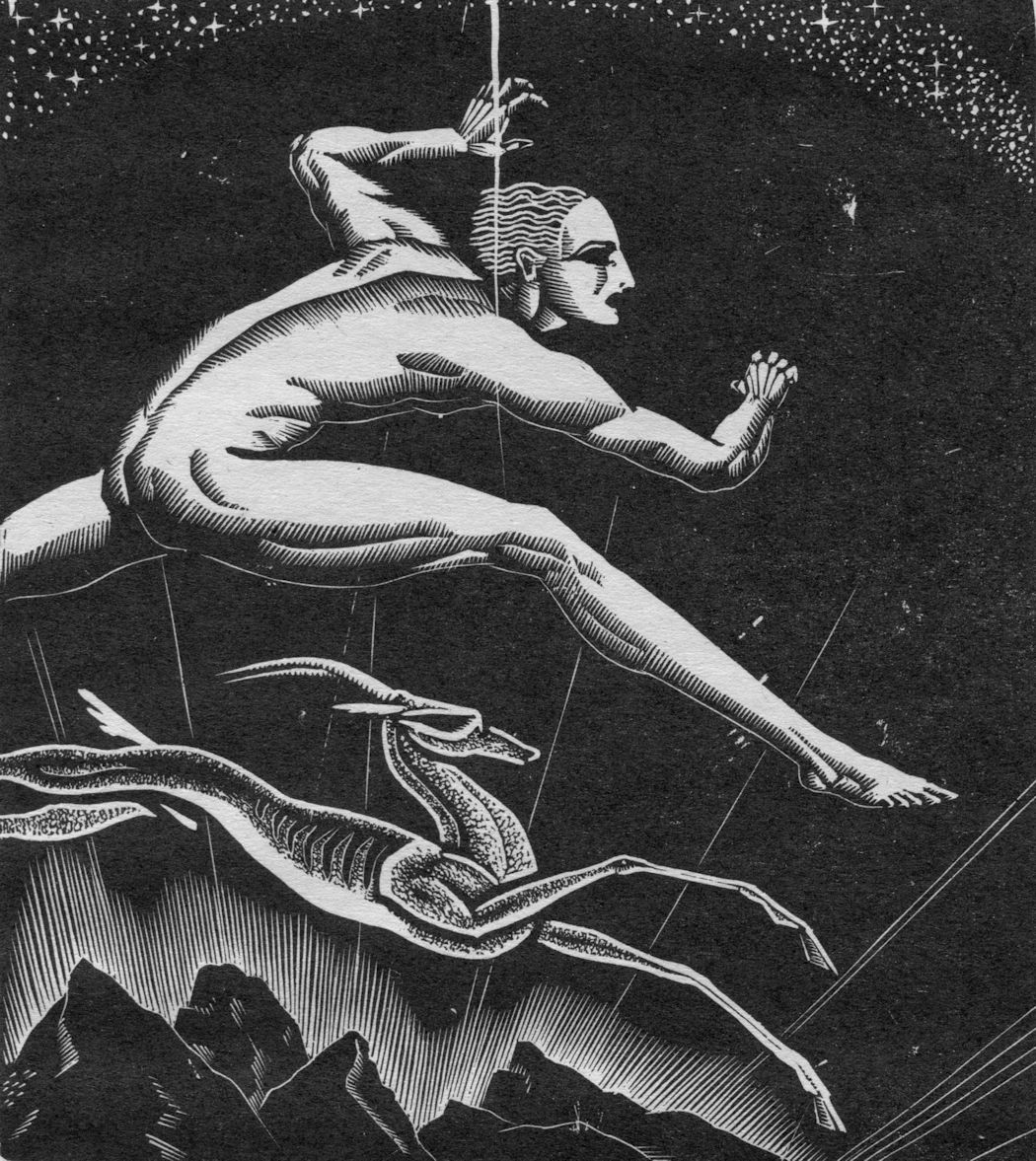This rare etching, now wending its way hither, dates from 1919 and depicts two remarkable characters. It was created by Tanna Kasimir-Hoernes (1887-1972), a gifted artist and the wife of Luigi Kasimir (1881-1962), perhaps the most far-ranging and prolific creator of notable natural and architectural views in the 20th century - you can see some of his work elsewhere on this website. Luigi is the diminutive fellow with bow tie facing us with a bemused expression. Luigi and Tanna, married in 1911, were kindred artistic spirits each of whose superb colored etchings are nearly indistinguishable from the other's.
The fellow with the enormous head who is shown in profile was Kasimir's publisher, Ernst Franz Sedgwick Hanfstaengl (1887-1975), known to all as "Putzi", meaning "little fellow" or "cutie", a bit ironic in consideration of his 6'4" height, burly physique, and gargoyle-like physiognomy. His father Edgar was a noted arts publisher, married to the American Katharine Wilhelmina Heine, who had Sedgwick blood - the stuff of American aristocracy - coursing through her veins. Putzi, a lifelong intellectual lightweight, graduated from Harvard College in 1909, where he distinguished himself chiefly by his able piano-playing and for the composition of various marches and other fortissimo pieces for the Harvard football team and the Hasty Pudding Club. His classmates included the proto-pundit Walter Lippmann and John Reed of "Ten Days That Shook the World" fame. He is fondly remembered for the Nazi salute he used to greet his classmates at the 25th reunion of his class in 1934.
The newly minted Harvard grad was placed in charge of the Hanfstaengl operations in the U.S. at their gallery on 57th street in Manhattan. He frequently practiced the piano at the Harvard Club of New York, where he became acquainted with both Theodore and Franklin Roosevelt. Putzi, an irrepressible extrovert, was briefly engaged to the author Djuna Barnes and socialized with Charlie Chaplin and William Randolph Hearst. With the confiscation of the Hanfstaengl American assets as enemy property in 1917, Putzi waited out the war stateside, eventually returning to Germany. And now it really gets interesting.
Settling in his native Bavaria in 1922, Hanfstaengl was asked by Truman Smith, an American officer and fellow Hasty Pudding Club member, to check out a rising demagogue named Adolf Hitler, so Putzi duly attended a rally in Munich and was bowled over by Hitler's oratory. Introducing himself, he found his way into Hitler's inner circle primarily as a result of his bravura piano playing. He composed a number of rousing marches for the party, and is said to have coined the infamous catchphrase "Sieg Heil". In the aftermath of the 1923 Beer Hall Putsch, Putzi decamped to Austria to lie low while Hitler took refuge in Hanfstaengl's house in Uffing, where he was captured by the authorities. In one of the most consequential acts in all of recorded history, Putzi's wife Helene, whom Hitler adored, is said to have persuaded Hitler not to commit suicide when faced with capture.
The Hanfstaengls and Hitler remained close until the early years of the Nazi regime. Hitler even became godfather to the Hanfstaengl's son Egon, who called him "Onkel 'Dolf". Putzi headed the regime's Foreign Press Office in Berlin but was eventually squeezed out by Goebbels, known behind his back as The Poison Dwarf, who bitterly resented the perceived competition offered by Putzi. For his part, Hanfstaengl's slipshod embrace of National Socialist philosophy and occasional kind words about Jews raised the ire not only of Hitler but also of his most fanatical henchmen, leading Hanfstaengl to flee for his life from Germany to Switzerland. He then settled in England and finally went to the United States, staying here until 1946, when he returned to Germany for good and spent his remaining years re-imagining his past.

